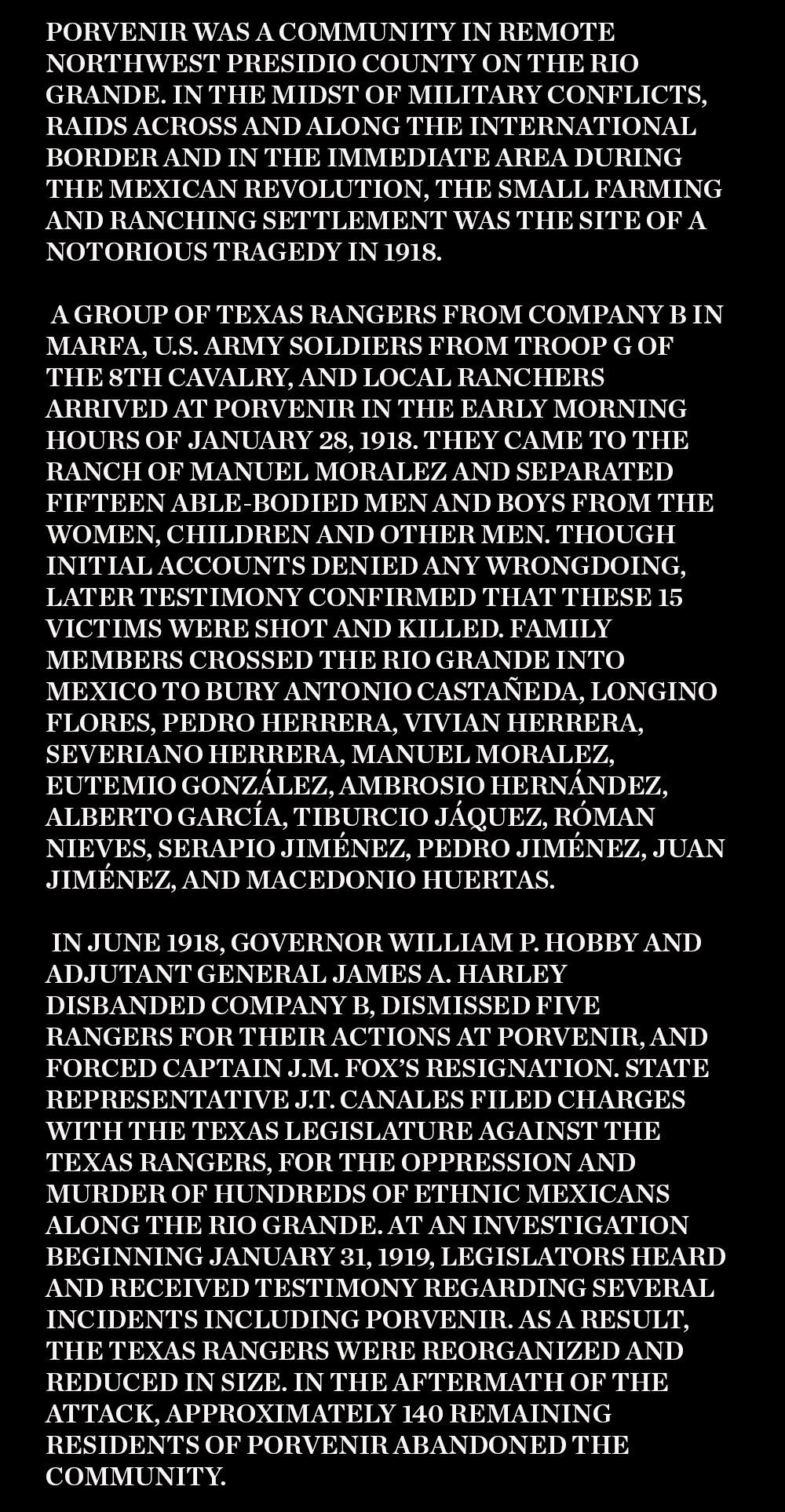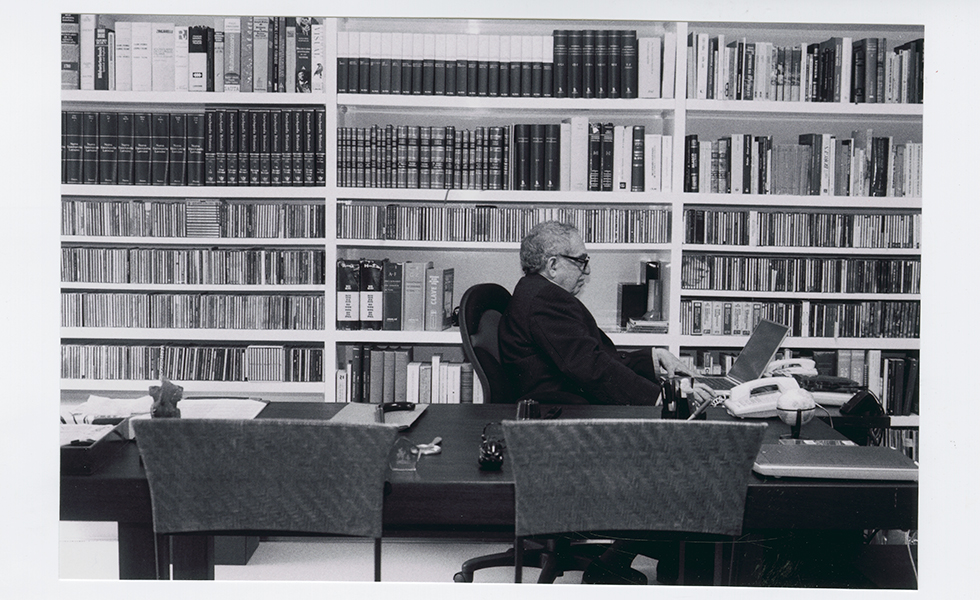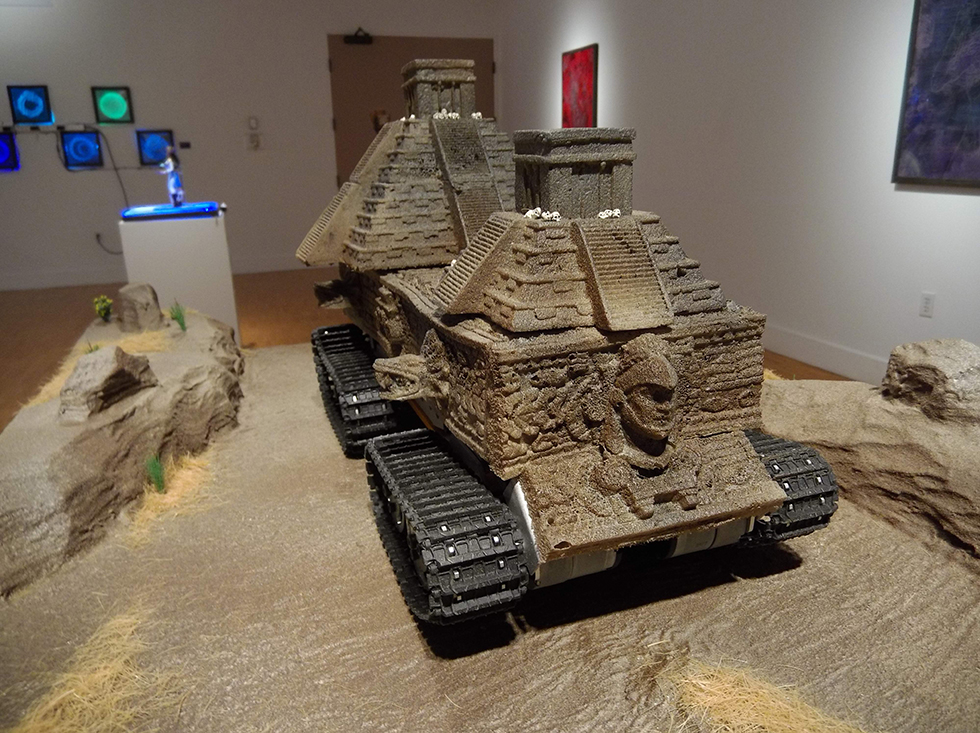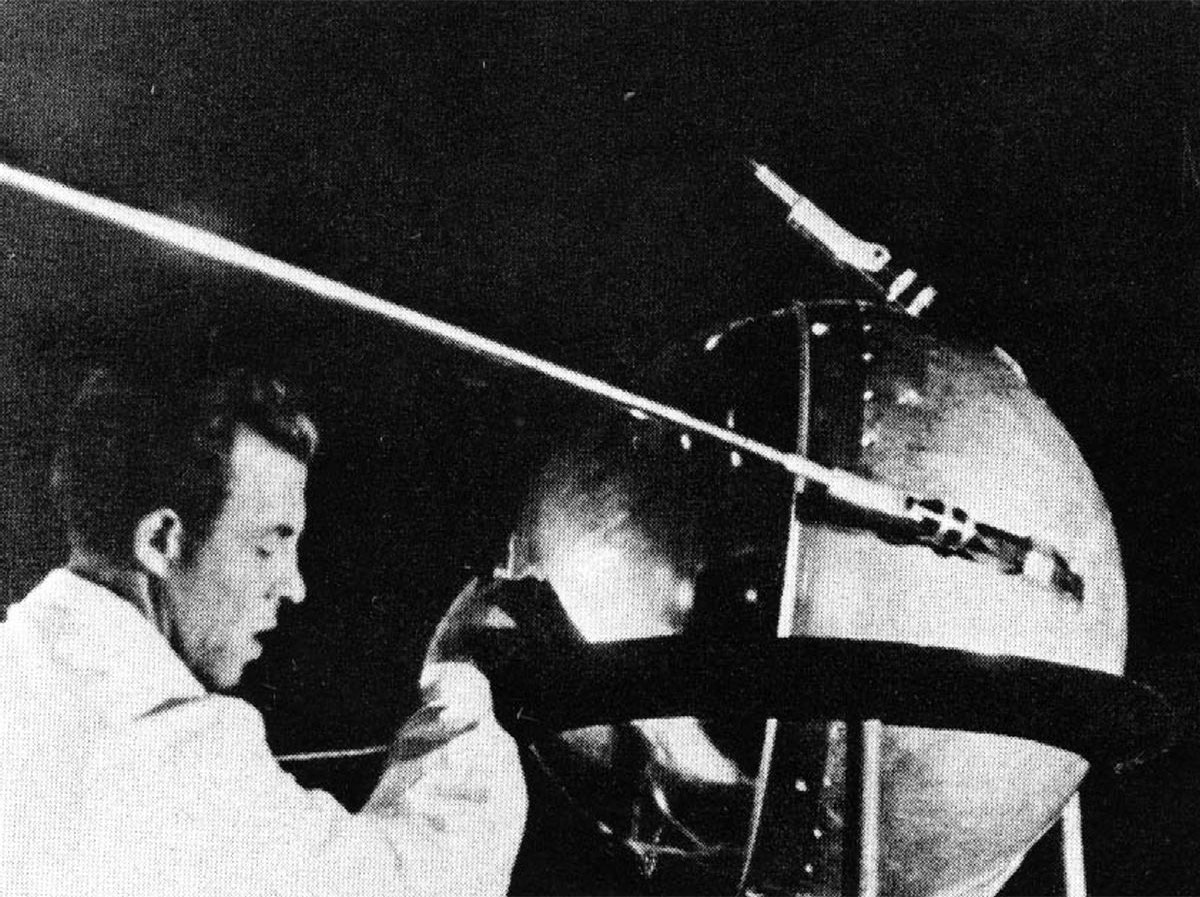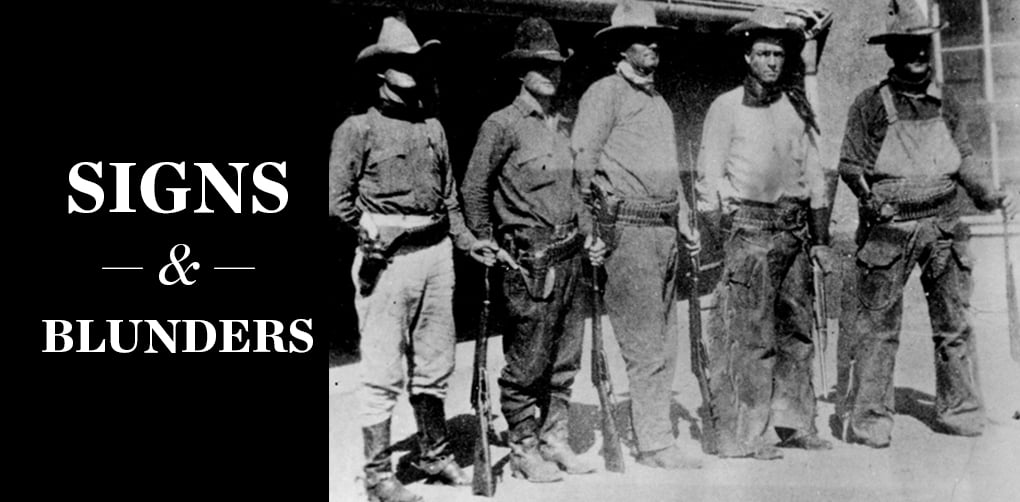
In 1918, a state-sanctioned vigilante force killed 15 unarmed Mexicans in Porvenir. When their descendants applied for a historical marker a century later, they learned that not everyone wants to remember one of Texas’ darkest days.
–
by Daniel Blue Tyx
November 26, 2018
The name of the town was Porvenir, or “future.” In the early morning hours of January 28, 1918, 15 unarmed Mexicans and Mexican Americans were awakened by a state-sanctioned vigilante force of Texas Rangers, U.S. Army cavalry and local ranchers. The men and boys ranged in age from 16 to 72. They were taken from their homes, led to a bluff over the Rio Grande and shot from 3 feet away by a firing squad. The remaining residents of the isolated farm and ranch community fled across the river to Mexico, where they buried the dead in a mass grave. Days later, the cavalry returned to burn the abandoned village to the ground.
These, historians broadly agree, are the facts of what happened at Porvenir. But 100 years later, the meaning of those facts remains fiercely contested. In 2015, as the centennial of the massacre approached, a group of historians and Porvenir descendants applied for and was granted a Texas Historical Commission (THC) marker. After a three-year review process, the THC approved the final text in July. A rush order was sent to the foundry so that the marker would be ready in time for a Labor Day weekend dedication ceremony planned by descendants. Then, on August 3, Presidio County Historical Commission Chair Mona Blocker Garcia sent an email to the THC that upended everything. Though THC records show that the Presidio commission had been consulted throughout the marker approval process, Garcia claimed to be “shocked” that the text was approved. She further asserted, without basis, that “the militant Hispanics have turned this marker request into a political rally and want reparations from the federal government for a 100-year-old-plus tragic event.”

Four days later, Presidio County Attorney Rod Ponton sent a follow-up letter. Without identifying specific errors in the marker text, he demanded that the dedication ceremony be canceled and the marker’s production halted until new language could be agreed upon. Ponton speculated, falsely, that the event was planned as a “major political rally” for Beto O’Rourke with the participation of La Raza Unida founding member José Ángel Gutiérrez, neither of whom was involved. Nonetheless, THC History Programs Director Charles Sadnick sent an email to agency staff the same day: “After getting some more context about where the marker sponsor may be coming from, we’re halting production on the marker.”
The American Historical Association quickly condemned the THC’s decision, as did the office of state Senator José Rodríguez, a Democrat whose district includes both Presidio County and El Paso, where the ceremony was to be held. Historians across the country also spoke out against the decision. Sarah Zenaida Gould, director of the Museo del Westside in San Antonio and cofounder of Latinos in Heritage Conservation, responded in an email to the agency that encapsulates the views of many of the historians I interviewed: “Halting the marker process to address this statement as though it were a valid concern instead of a dog whistle is insulting to all people of color who have personally or through family history experienced state violence.”
How did a last-gasp effort, characterized by factual errors and inflammatory language, manage to convince the state agency for historic preservation to reverse course on a marker three years in the making and sponsored by a young Latina historian with an Ivy League pedigree and Texas-Mexico border roots? An Observer investigation, involving dozens of interviews and hundreds of emails obtained through an open records request, reveals a county still struggling to move on from a racist and violent past, far-right amateur historians sowing disinformation and a state agency that acted against its own best judgment.
The Porvenir massacre controversy is about more than just the fate of a single marker destined for a lonely part of West Texas. It’s about who gets to tell history, and the continuing relevance of the border’s contested, violent and racist past to events today.
–
Several rooms in Benita Albarado’s home in Uvalde are almost overwhelmed by filing cabinets and stacks of clipboards, the ever-growing archive of her research into what happened at Porvenir. For most of her life, Benita, 74, knew nothing about the massacre. What she did know was that her father, Juan Flores, had terrible nightmares, and that in 1950 he checked himself in to a state mental hospital for symptoms that today would be recognized as PTSD. When she asked her mother what was wrong with him, she always received the same vague response: “You don’t understand what he’s been through.”
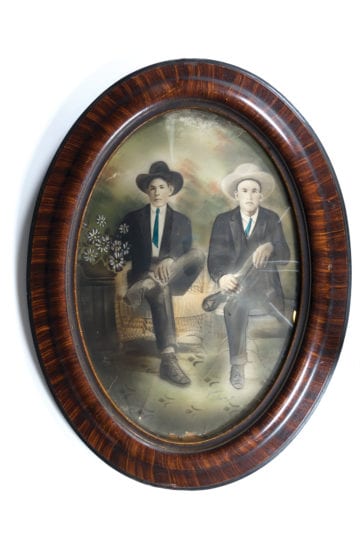
In 1998, Benita and her husband, Buddy, began tracing their family trees. Benita was perplexed that she couldn’t find any documentation about her grandfather, Longino Flores. Then she came across the archival papers of Harry Warren, a schoolteacher, lawyer and son-in-law of Tiburcio Jáquez, one of the men who was murdered. Warren had made a list of the victims, and Longino’s name was among them. Warren also described how one of his students from Porvenir had come to his house the next morning to tell him what happened, and then traveled with him to the massacre site to identify the bodies, many of which were so mutilated as to be virtually unrecognizable. Benita immediately saw the possible connection. Her father, 12 at the time, matched Warren’s description of the student.
Benita and Buddy drove from Uvalde to Odessa, where her father lived, with her photocopied papers. “Is that you?” she asked. He said yes. Then, for the first time in 80 years, he began to tell the story of how he was kidnapped with the men, but then sent home because of his age; he was told that the others were only going to be questioned. To Benita and Buddy’s amazement, he remembered the names of 12 of the men who had been murdered. They were the same as those in Harry Warren’s papers. He also remembered the names of the ranchers who had shown up at his door. Some of those, including the ancestors of prominent families still in Presidio County, had never been found in any document.
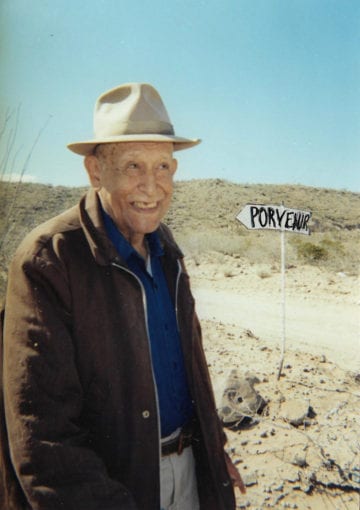
Talking about the massacre proved healing for Flores. His nightmares stopped. In 2000, at age 96, he decided that he wanted to return to Porvenir. Buddy drove them down an old mine road in a four-wheel-drive truck. Flores pointed out where his old neighbors used to live, even though the buildings were gone. He guided Buddy to the bluff where the men were killed — a different location than the one commonly believed by local ranchers to be the massacre site. His memory proved to be uncanny: At the bluff, the family discovered a pre-1918 military bullet casing, still lying on the Chihuahuan desert ground.
Benita and Buddy began advocating for a historical marker in 2000, soon after their trip to Porvenir. “A lot of people say that this was a lie,” Buddy told me. “But if you’ve got a historical marker, the state has to acknowledge what happened.” Their efforts were met by resistance from powerful ranching families, who held sway over the local historical commission. The Albarados had already given up when they met Monica Muñoz Martinez, a Yale graduate student from Uvalde, who interviewed them for her dissertation. In 2013, Martinez, by then an assistant professor at Brown University, co-founded Refusing to Forget, a group of historians aiming to create broader public awareness of border violence, including Porvenir and other extrajudicial killings of Mexicans by Texas Rangers during the same period. The most horrific of these was La Matanza, in which dozens of Mexicans and Mexican Americans were murdered in the Rio Grande Valley in 1915.
In 2006, the THC created the Undertold Markers program, which seemed tailor-made for Porvenir. According to its website, the program is designed to “address historical gaps, promote diversity of topics, and proactively document significant underrepresented subjects or untold stories.” Unlike the agency’s other marker programs, anyone can apply for an undertold marker, not just county historical commissions. Martinez’s application for a Porvenir massacre marker was accepted in 2015.
Though the approval process for the Porvenir marker took longer than usual, by the summer of 2018 everything appeared to be falling into place. On June 1, Presidio County Historical Commission chair Garcia approved the final text. (Garcia told me that she thought she was approving a different text. Her confusion is difficult to understand, since the text was attached to the digital form she submitted approving it.) Martinez began coordinating with the THC and Arlinda Valencia, a descendant of one of the victims, to organize a dedication ceremony in El Paso.
“They weren’t just simple farmers. I seriously doubt that they were just killed for no reason.”
In mid-June, Valencia invited other descendants to the event and posted it on Facebook. She began planning a program to include a priest’s benediction, a mariachi performance and brief remarks by Martinez, Senator Rodríguez and a representative from the THC. The event’s climax would be the unveiling of the plaque with the names of the 15 victims.
Then the backlash began.
–
“Why do you call it a massacre?” is the first thing Jim White III said over the phone when I told him I was researching the Porvenir massacre. White is the trustee of the Brite Ranch, the site of a cross-border raid by Mexicans on Christmas Day 1917, about a month before the Porvenir massacre. When I explained that the state-sanctioned extrajudicial execution of 15 men and boys met all the criteria I could think of for a massacre, he shot back, “It sounds like you already have your opinion.”
For generations, ranching families like the Brites have dominated the social, economic and political life of Presidio County. In a visit to the Marfa & Presidio County Museum, I was told that there were almost no Hispanic surnames in any of the exhibits, though 84 percent of the county is Hispanic. The Brite family name, however, was everywhere.
White and others in Presidio County subscribe to an alternative history of the Porvenir massacre, centering on the notion that the Porvenir residents were involved in the bloody Christmas Day raid.
“They weren’t just simple farmers,” White told me, referring to the victims. “I seriously doubt that they were just killed for no reason.” Once he’d heard about the historical marker, he said, he’d talked to everyone he knew about it, including former Texas Land Commissioner Jerry Patterson and Mona Blocker Garcia.
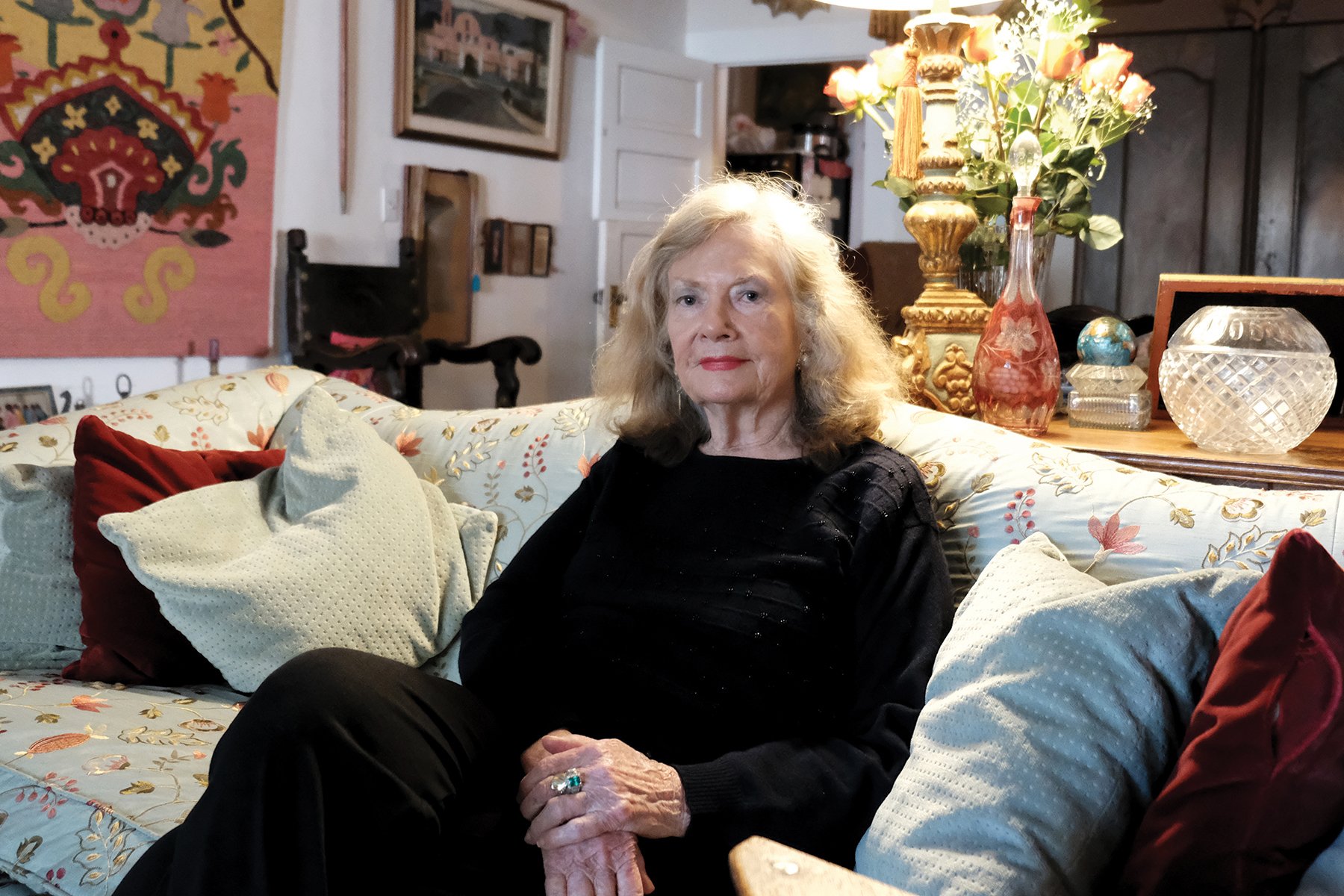
I visited Garcia at her Marfa home, an 1886 adobe that’s the same age as the venerable Marfa County Courthouse down the street. Garcia, 82, is Anglo, and married to a former oil executive whose ancestry, she explained, is Spanish and French Basque. A Houston native, she retired in the 1990s to Marfa, where she befriended the Brite family and became involved in local history. She told me that she had shared a draft text of the marker with the Brites, and they had agreed that it was factually inaccurate.
Garcia cited a story a Brite descendant had told her about a young goat herder from Porvenir who purportedly witnessed the Christmas Day raid, told authorities about the perpetrators from his community and then disappeared without a trace into a witness protection program in Oklahoma. When I asked if there was any evidence that the boy actually existed, she acknowledged the story was “folklore.” Still, she said, “the story has lasted 100 years. Why would anybody make something like that up?”

The actual history is quite clear. In the days after the massacre, the Texas Rangers commander, Captain J.M. Fox, initially reported that Porvenir residents had fired on the Rangers. Later, he claimed that residents had participated in the Christmas Day raid. Subsequent investigations by the Mexican consulate, the U.S. Army and state Representative J.T. Canales concluded that the murdered men were unarmed and innocent, targeted solely because of their ethnicity by a vigilante force organized at the Brite Ranch. As a result, in June 1918, five Rangers were dismissed, Fox was forced to resign and Company B of the Texas Rangers was disbanded.
But justice remained elusive. In the coming years, Fox re-enlisted as captain of Company A, while three of the dismissed lawmen found new employment. One re-enlisted as a Ranger, a second became a U.S. customs inspector and the third was hired by the Brite Ranch. No one was ever prosecuted. As time passed, the historical records of the massacre, including Harry Warren’s papers, affidavits from widows and other relatives and witness testimony from the various investigations, were largely forgotten. In their place came texts like Walter Prescott Webb’s The Texas Rangers: A Century of Frontier Defense, which played an outsize role in the creation of the heroic myth of the Texas Rangers. Relying entirely on interviews with the murderers themselves, Webb accepted at face value Fox’s discredited version of events. For more than 50 years, Webb’s account was considered the definitive one of the massacre — though, unsurprisingly, he didn’t use that word.
–
An Observer review of hundreds of emails shows that the state commission was aware of potential controversy over the marker from the very beginning. In an email from 2015, Executive Director Mark Wolfe gave John Nau, the chair of the THC’s executive committee, a heads-up that while the marker was supported by historical scholarship, “the [Presidio County Historical Commission] opposes the marker.” The emails also demonstrate that the agency viewed the claims of historical inaccuracies in the marker text made by Mona Blocker Garcia and the county commission as minor issues of wording.
On August 6, the day before the decision to halt the marker, Charles Sadnick, the history programs director, wrote Wolfe to say that the “bigger problem” was the ceremony, where he worried there might be disagreements among Presidio County residents, and which he described as “involving some politics which we don’t want a part of.”
What were the politics that the commission was worried about, and where were these concerns coming from? Garcia’s last-minute letter may have been a factor, but it wasn’t the only one. For the entire summer, Glenn Justice, a right-wing amateur historian who lives in a rural gated community an hour outside San Angelo, had been the driving force behind a whisper campaign to discredit Martinez and scuttle the dedication ceremony.
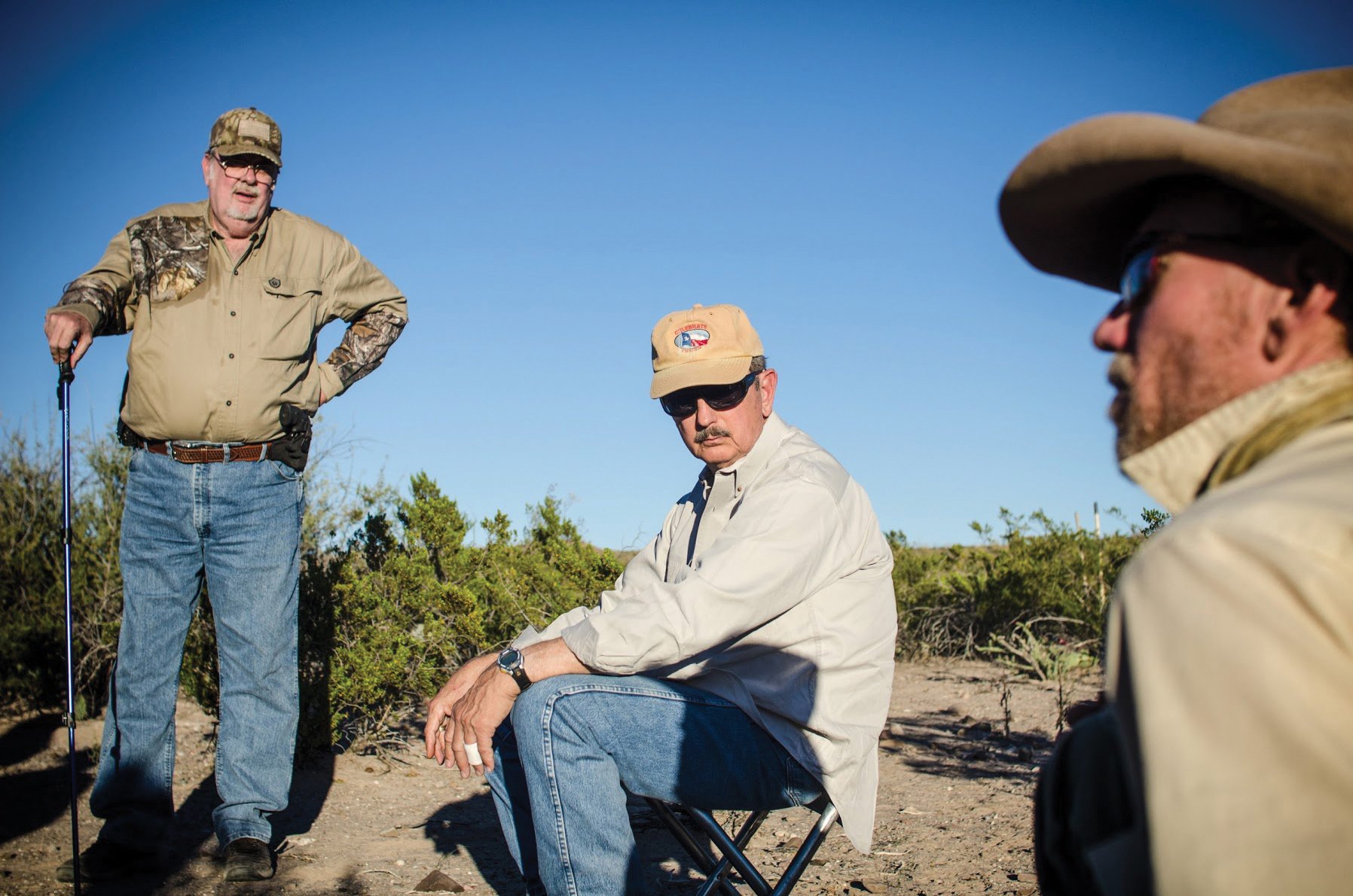
“There are radicals in the ‘brown power’ movement that only want the story told of Rangers and [the] Army and gringos killing innocent Mexicans,” Justice told me when we met in his garage, which doubles as the office for Rimrock Press, a publishing company whose catalog consists entirely of Justice’s own work. He was referring to Refusing to Forget and in particular Martinez, the marker’s sponsor.
Justice has been researching the Porvenir massacre for more than 30 years, starting when he first visited the Big Bend as a graduate student. He claims to be, and probably is, the first person since schoolteacher Harry Warren to call Porvenir a “massacre” in print, in a master’s thesis published by the University of Texas at El Paso in 1991. Unlike White and Garcia, Justice doesn’t question the innocence of the Porvenir victims. But he believes that additional “context” is necessary to understand the reasons for the massacre, which he views as an aberration, rather than a representatively violent part of a long history of racism. “There have never been any problems between the races to speak of [in Presidio County],” he told me.

In 2015, Justice teamed up with former Land Commissioner Jerry Patterson and Sul Ross State University archaeologist David Keller on a privately funded excavation at the massacre site. He is working on a new book about the bullets and bullet casings they found — which he believes implicate the U.S. Army cavalry in the shooting — and also partnered with Patterson to produce a documentary. But they’d run out of money, and the film was taken over by noted Austin filmmaker Andrew Shapter, who pitched the project to PBS and Netflix. In the transition, Justice was demoted to the role of one of 12 consulting historians. Meanwhile, Martinez was given a prominent role on camera.
Justice was disgruntled when he learned that the dedication ceremony would take place in El Paso. He complained to organizer Arlinda Valencia and local historical commission members before contacting Ponton, the county attorney, and Amanda Shields, a descendant of massacre victim Manuel Moralez.
“I didn’t want to take my father to a mob scene,” Shields told me over the phone, by way of explaining her opposition to the dedication ceremony. She believed the rumor that O’Rourke and Gutiérrez would be involved.

In August, Shields called Valencia to demand details about the program for the ceremony. At the time, she expressed particular concern about a potential Q&A event with Martinez that would focus on parallels between border politics and violence in 1918 and today.
“This is not a political issue,” Shields told me. “It’s a historical issue. With everything that was going on, we didn’t want the ugliness of politics involved in it.” By “everything,” she explained, she was referring primarily to the issue of family separation. Benita and Buddy Albarado told me that Shields’ views represent a small minority of descendants.
Martinez said that the idea of ignoring the connections between past and present went against her reasons for fighting to get a marker in the first place. “I’m a historian,” she said. “It’s hard to commemorate such a period of violence, in the midst of another ongoing humanitarian crisis, when this period of violence shaped the institutions of policing that we have today. And that cannot be relegated to the past.”
–
After communicating with Justice and Shields, Ponton phoned THC Commissioner Gilbert “Pete” Peterson, who is a bank investment officer in Alpine. That call set in motion the sequence of events that would ultimately derail the marker. Peterson immediately emailed Wolfe, the state commission’s executive director, to say that the marker was becoming “a major political issue.” Initially, though, Wolfe defended the agency’s handling of the marker. “Frankly,” Wolfe wrote in his reply, “this might just be one where the [Presidio County Historical Commission] isn’t going to be happy, and that’s why these stories have been untold for so long.” Peterson wrote back to say that he had been in touch with members of the THC executive committee, which consists of 15 members appointed by either former Governor Rick Perry or Governor Greg Abbott, and that an email about the controversy had been forwarded to THC chair John Nau. Two days later, Peterson added, “This whole thing is a burning football that will be thrown to the media.”
At a meeting of the Presidio County Historical Commission on August 17, Peterson suggested that the executive board played a major role in the decision to pause production of the marker. “I stopped the marker after talking to Rod [Ponton],” Peterson said. “I’ve spent quite a bit of time talking with the chairman and vice-chairman [of the THC]. What we have said, fairly emphatically, is that there will not be a dedication in El Paso.” Through a spokesperson, Wolfe said that the executive committee is routinely consulted and the decision was ultimately his.

The spokesperson said, “The big reason that the marker was delayed was to be certain about its accuracy. We want these markers to stand for generations and to be as accurate as possible.”
With no marker to unveil, Valencia still organized a small commemoration. Many descendants, including Benita and Buddy Albarado, chose not to attend. Still, the event was described by Jeff Davis, a THC representative in attendance, as “a near perfect event” whose tone was “somber and respectful but hopeful.”
–
Most of THC’s executive committee members are not historians. The chair, John Nau, is CEO of the nation’s largest Anheuser-Busch distributor and a major Republican party donor. His involvement in the Porvenir controversy was not limited to temporarily halting the marker. In August, he also instructed THC staff to ask the Presidio historical commission to submit applications for markers commemorating raids by Mexicans on white ranches during the Mexican Revolution, which Nau described as “a significant but largely forgotten incident in the state’s history.”
Garcia confirmed that she had been approached by THC staff. She added that the THC had suggested two specific topics: the Christmas Day raid and a subsequent raid at the Neville Ranch.
The idea of additional plaques to provide so-called context that could be interpreted as justifying the massacre — or at the very least setting up a false moral equivalence — appears to have mollified critics like White, Garcia and Justice. The work on a revised Porvenir massacre text proceeded quickly, with few points of contention, once it began in mid-September. The marker was sent to the foundry on September 18.
“It’s hard to commemorate such a period of violence, in the midst of another ongoing humanitarian crisis, when this period of violence shaped the institutions of policing that we have today.”
In the end, the Porvenir descendants will get their marker — but it may come at a cost. Martinez called the idea of multiple markers “deeply unsettling” and not appropriate for the Undertold Marker program. “Events like the Brite Ranch raid and the Neville raid have been documented by historians for over a century,” she said. “These are not undertold histories. My concern with having a series of markers is that, again, it casts suspicion on the victims of these historical events. It creates the logic that these raids caused this massacre, that it was retribution for these men and boys participating.”
In early November, the THC unexpectedly announced a dedication ceremony for Friday, November 30. The date was one of just a few on which Martinez, who was still planning on organizing several public history events in conjunction with the unveiling, had told the agency months prior that she had a schedule conflict. In an email to Martinez, Sadnick said that it was the only date Nau could attend this year, and that it was impossible for agency officials to make “secure travel plans” once the legislative session began in January.
A handful of descendants, including Shields and the Albarados, still plan to attend. “This is about families having closure,” Shields told me. “Now, this can finally be put to rest.”
The Albarados are livid that the THC chose a date that, in their view, prioritized the convenience of state and county officials over the attendance of descendants — including their own daughters, who feared they wouldn’t be able to get off work. They also hope to organize a second, unofficial gathering at the marker site next year, with the participation of more descendants and the Refusing to Forget historians. “We want people to know the truth of what really happened [at Porvenir],” Buddy told me, “and to know who it was that got this historical marker put there.”
Others, like Arlinda Valencia, planned to stay home. “Over 100 years ago, our ancestors were massacred, and the reason they were massacred was because of lies that people were stating as facts,” she told me in El Paso. “They called them ‘bandits,’ when all they were doing was working and trying to make a living. And now, it’s happening again.”
Read the most updated version of the historical marker text below.
